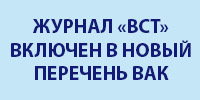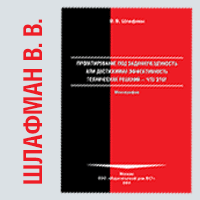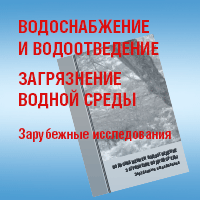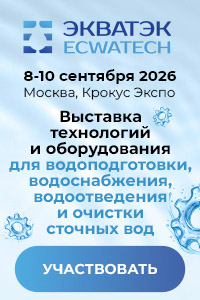№5|2022
WASTEWATER TREATMENT
DOI 10.35776/VST.2022.05.05
UDC 628.3(628.345.1)
Choosing coagulants and flocculants for the local treatment of wastewater of pulp and paper industry
Summary
The results of studies on removing lignosulfonates, suspended solids and sulfur-containing compounds from pulp and paper industry wastewater by chemical treatment are presented. As chemicals the following coagulants were studied: alumina, ferrous sulfate, iron (III) sulfate, and flocculants Praestol and RusFloc, that differ in charge, molar mass, and ionic activity. In the course of the experiment, it was found that the most effective removal of lignosulfonates and sulfur-containing compounds from wastewater proceeded in the presence of ferrous sulfate coagulant and Praestol 810 cationic flocculant. In this case, easily settling thickened sludge is formed and the efficiency of removing sulfide ion is 92%, the color of water decreases 3–4 times. The optimal dose of the coagulant as metal ion is 300 mg/dm3, the dose of the flocculant is 1.5 mg/dm3. Comparison of the activity of RusFloc cationic flocculants in terms of settling time, sludge layer thickness, clarified water COD, showed that the use of RusFloc 504 cationic flocculant is most effective for the coagulation of wastewater containing lignosulfonates. The optimal dose of the chemical was 5 mg/dm3. Studies on wastewater treatment by coagulation-flocculation in the presence of ferrous sulfate coagulant and RusFloc 504 flocculant at pH 8.5 showed 70% reduction of COD of organic compounds – lignosulfonates, and more than 90% color. On the basis of the conducted studies, the choice of conditions and effective chemicals for the local treatment of pulp and paper industry wastewater is substantiated.
Key words
coagulation , pulp and paper industry , flocculation , optimal dosage of chemical , pulp production , lignosulfonates , sulfide-ion
The further text is accessible on a paid subscription.
For authorisation enter the login/password.
Or subscribe
REFERENCES
- Alikin V. N., Antskaitis A. V., Gorigov A. P., et al. Sovremennye tekhnologii obrabotki vody [Advanced technologies of water treatment. Moscow, Nedra Publ., 2014, 207 p.].
- Mohammadreza Kamali, Seyedeh Azadeh Alavi-Borazjani, Zahra Khodaparast, Mohammadreza Khalaj, Akram Jahanshahi, Elisabete Costa, Isabel Capela. Additive and additive-free treatment technologies for pulp and paper mill effluents: Advances, challenges and opportunities. Water Resources and Industry, 2019, no. 21, pp. 1–22. DOI:10.1016/j.wri.2019.100109.
- Lichutina T. F., Bogolitsyn K. G., Gusakova M. A. [Environmental appraisal of the operation of pulp and paper industries. Promising trends of waste utilization]. Rossiiskii Khimicheskii Zhurnal, 2011, no. 1, pp. 101–107. (In Russian).
- Glushankova I. S., Mikhailova A. M., Zhulanova A. E. [Choosing chemicals for local treatment of wastewater of pulp and paper industry]. Voprosy Sovremennoi Nauki i Praktiki. University named after V. I. Vernadskii, 2020, no. 2, pp. 9–15. (In Russian).
- Boikova T. E., Bogdanovich N. I., Vorontsov K. B. [The effectiveness of using coagulants in water purification for the pulp and paper industry in the Far North]. Lesnoi Zhurnal, 2019, no. 1, pp. 141–152. (In Russian).
- Chalakova E. S. [Efficiency of using flocculants of various types after coagulation treatment of lignin-containing wastewater]. Innovative technologies in the science and education. Proceedings of the IV International Scientific-and-Practical Conference. Cheboksary, December 18, 2015. Cheboksary, Interactive Plus SCC, 2015, no. 4 (4), pp. 34–36. (In Russian).
- Sedova E. L., Povzhuk B. S., Vorontsov K. B. Otsenka effektivnosti koaguliatsionnoi ochistki stochnoi vody ot promyvki tselliulozy [Evaluation of the effectiveness of coagulation treatment of wastewater from pulp washing]. Naukarastudent.ru, 2015, no. 07 (19). Available at: http://nauka-rastudent.ru/19/2789/ (accessed 22.01.2022). (In Russian).
- Birjandi N., Younesi H., Bahramifar N. Treatment of wastewater effluents from paper-recycling plants by coagulation process and optimization of treatment conditions with response surface methodology. Applied Water Science, 2016, no. 6, pp. 339–348.
- Irfan M., Butt T., Imtiaz N., Abbas N., Khan R. A., Shafique A. The removal of COD, TSS and colour of black liquor by coagulation-flocculation process at optimized pH, settling and dosing rate. Arabian Journal of Chemistry, 2017, no. 10, pp. 2307–2318. DOI:10.1016/j.arabjc.2013.08.007.
- Maryam Gholami, Mohammad Taghi Ghaneian, Seyedeh Salehe Fatemi, Parvaneh Talebi, Arash Dalvand. Investigating the efficiency of coagulation and flocculation process in wastewater treatment of paper and cardboard recycling industry. International Journal of Environmental Analytical Chemistry, 2020, no. 1, pp. 1–13. DOI: 10.1080/03067319.2020.1804891.
- Babenkov E. D. Ochistka vody koaguliantami [Water treatment with coagulants. Moscow, Naula Publ., 1977, 356 p.].
- Koganovskii A. M., Klimenko N. A., Levchenko T. M., et al. Ochistka i ispol’zovanie stochnykh vod v promyshlennov vodosnabzhenii [Wastewater treatment and reuse in the industrial water supply. Moscow, Khimiia Publ., 1983, 287 p.].
- Kachalova G. S. [Coagulation and sorption wastewater treatment]. Voda i Ekologiia: Problemy i Resheniia, 2019, no. 2, pp. 32–39. (In Russian).
- Alekseeva L. P., Kurova L. V. [The specific features of using cationic flocculants in surface water treatment]. Vodosnabzhenie i Sanitarnaia Tekhnika, 2012, no. 4, pp. 20–26. (In Russian).






